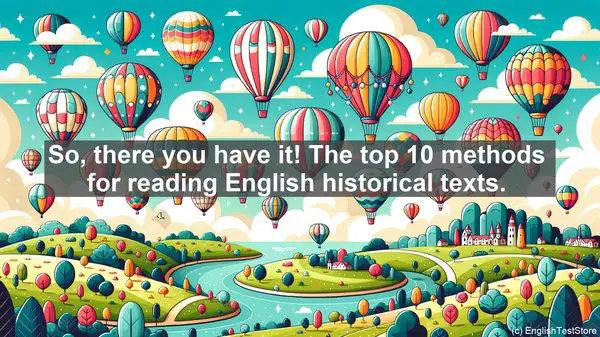Introduction
Hello students! Today, we’re diving into the fascinating world of English historical texts. But reading them can be a challenge. Fear not! We’ve compiled the top 10 methods that will make this task a breeze.

1. Skim and Scan
When you first encounter a text, don’t dive deep immediately. Instead, skim through it to get an overview. Then, scan for specific information you need. This way, you’ll quickly identify the text’s main ideas and relevant details.
2. Annotate
Grab a pen and start annotating. Underline key points, circle unfamiliar words, and jot down questions or thoughts. This active reading technique helps you engage with the text and aids in comprehension.
3. Contextualize
Historical texts are often influenced by the time they were written. So, understanding the historical context is crucial. Research the era, events, and social norms to grasp the text’s significance fully.

4. Break it Down
Long, complex sentences can be daunting. Break them down into smaller parts, focusing on one idea at a time. This deconstruction simplifies the text and enhances understanding.
5. Make Connections
History is interconnected. Relate the text to your prior knowledge of the era or other historical events. This not only aids comprehension but also enriches your understanding of the broader context.
6. Identify Key Players
Historical texts often mention significant individuals. Identify them and research their roles and contributions. This adds depth to your understanding of the text and the period it represents.
7. Consult Secondary Sources
While primary sources are invaluable, consulting secondary sources like scholarly articles or textbooks can provide additional insights and interpretations.
8. Take Breaks
Reading historical texts can be mentally taxing. Take regular breaks to avoid fatigue. This allows your brain to process the information effectively, leading to better retention.
9. Discuss and Debate
Engage in discussions or debates about the text with peers or teachers. This not only helps clarify doubts but also exposes you to different perspectives and interpretations.
10. Reflect and Summarize
After reading, take a moment to reflect on the text’s main ideas and your understanding. Summarize it in your own words. This reinforces your learning and acts as a handy reference for future use.
